You are using an out of date browser. It may not display this or other websites correctly.
You should upgrade or use an alternative browser.
You should upgrade or use an alternative browser.
Microphony
- Thread starter BE718
- Start date
- Status
- Not open for further replies.
OK, the measurements only took about 15 minutes, I suspect writing this post may take longer.
I placed an accelerometer on the amps top (Onkyo NR5010 in the theatre room speakers are Usher BE718 with paradigm sub12). The amp is sitting on 20mm mdf shelf with a reinforcing bit of ali angle cos the amp weighs a tonne. Nothing sophisticated in any way. Concrete floor, brick walls.
The first problem here is that if you are not familiar vibration or its terms the plots could be a bit meaningless. So what I did first was take two measurements that put put some context into this for people. 1st was tapping the amp top gently, second is dropping a tennis ball on it multiple times from a height of 10 cm. Both minimal vibration inputs. All plots are provided in velocity and acceleration.
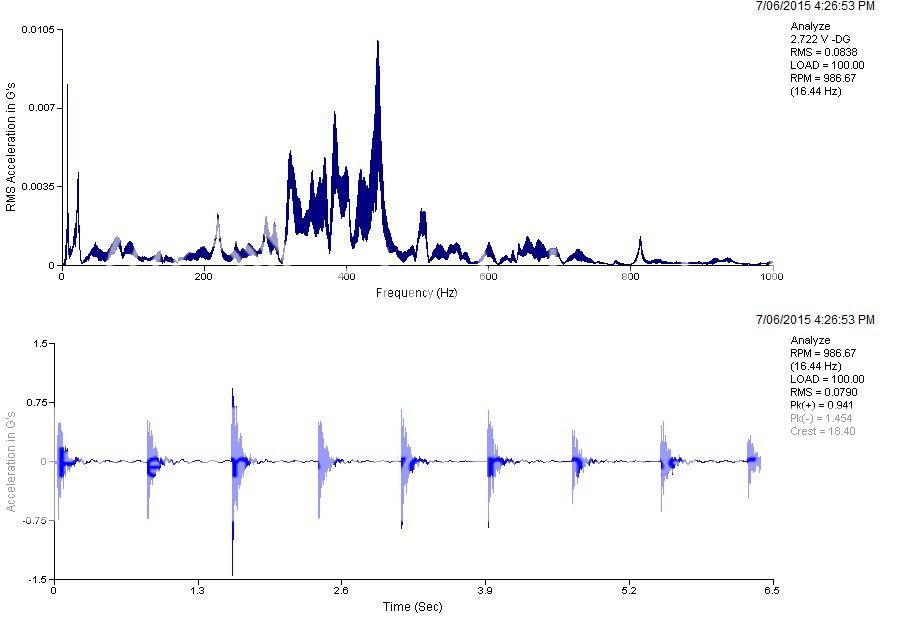
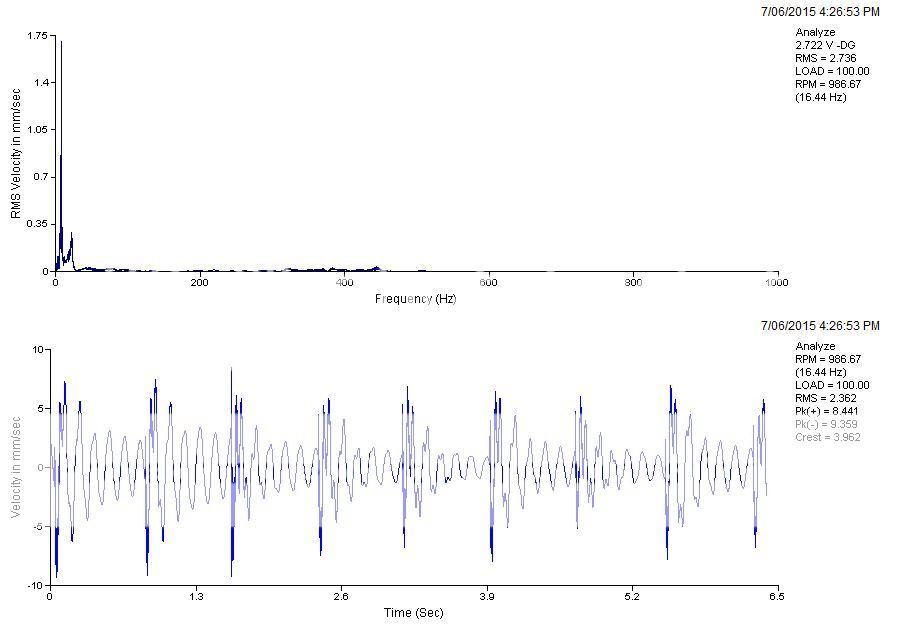

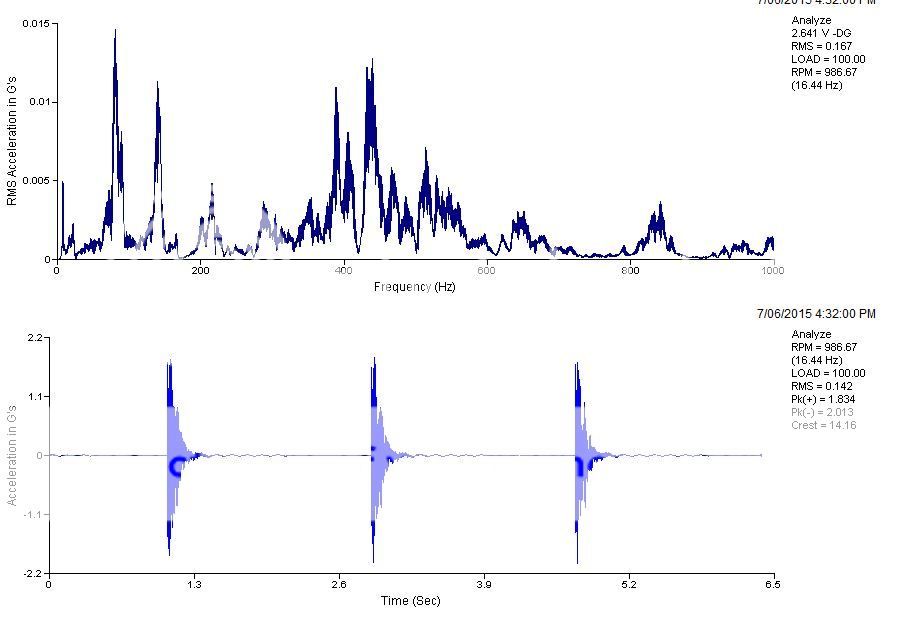
Next plot is the amp off and silent room. If you are wondering what the low frequency ski ramp is, it's a bit of accelerometer noise plus the inherent integration errors from converting to velocity from acceleration.
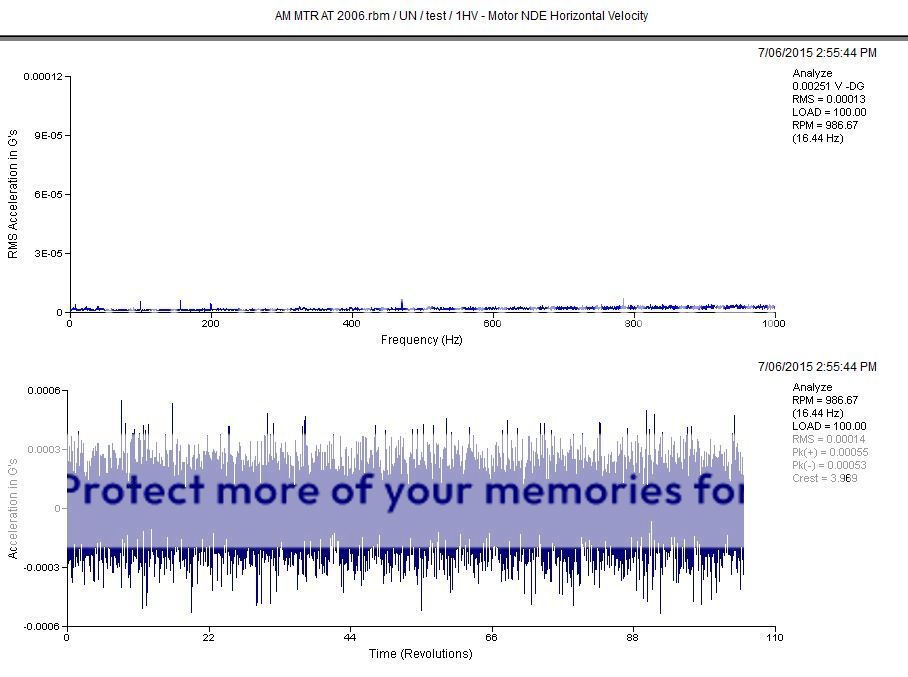
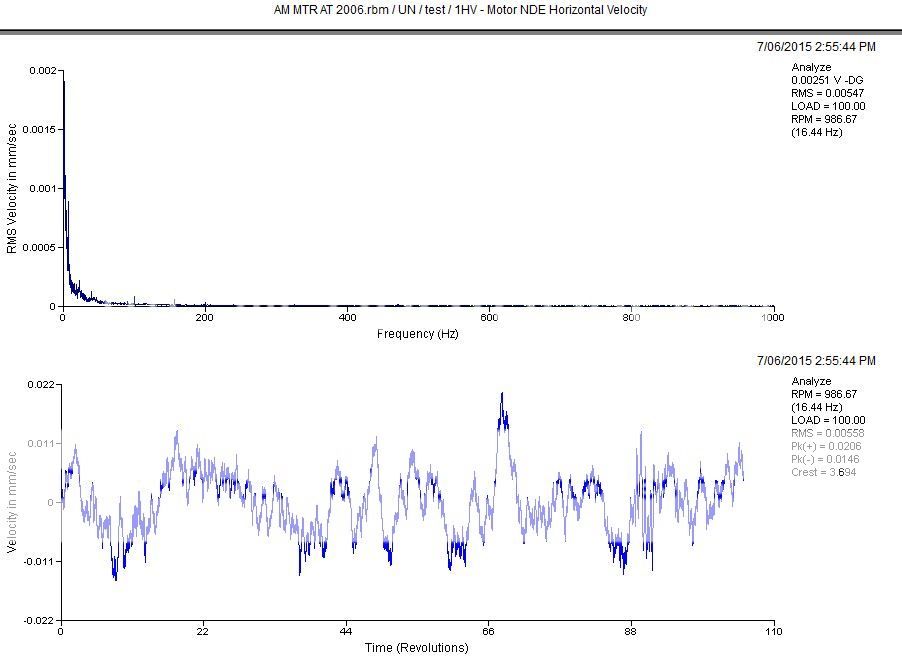
Next is amp on. Wow, you can see the harmonics of the mains transformer buzzing (its not electrical pick up).
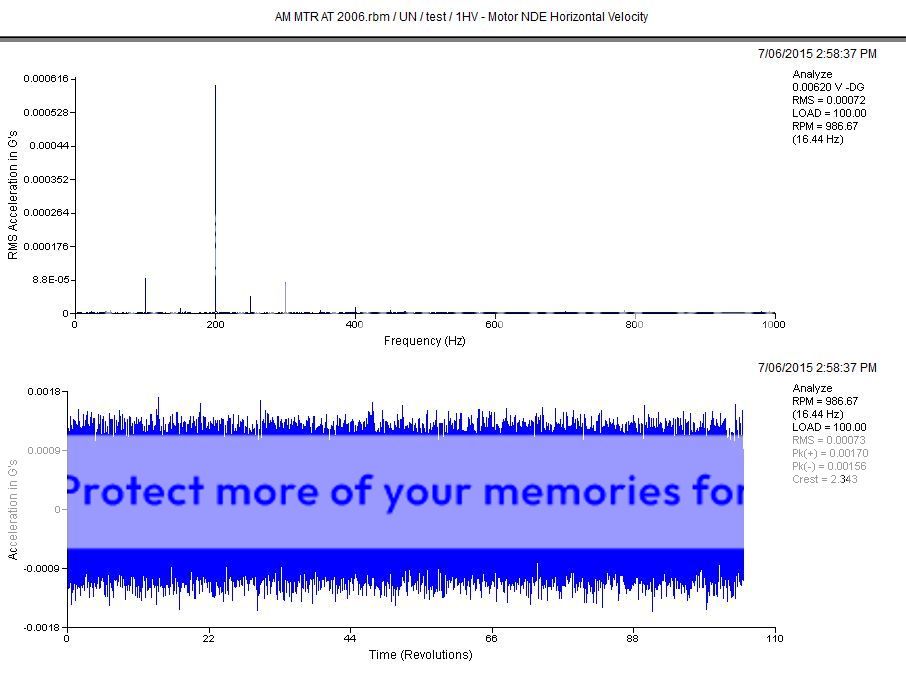
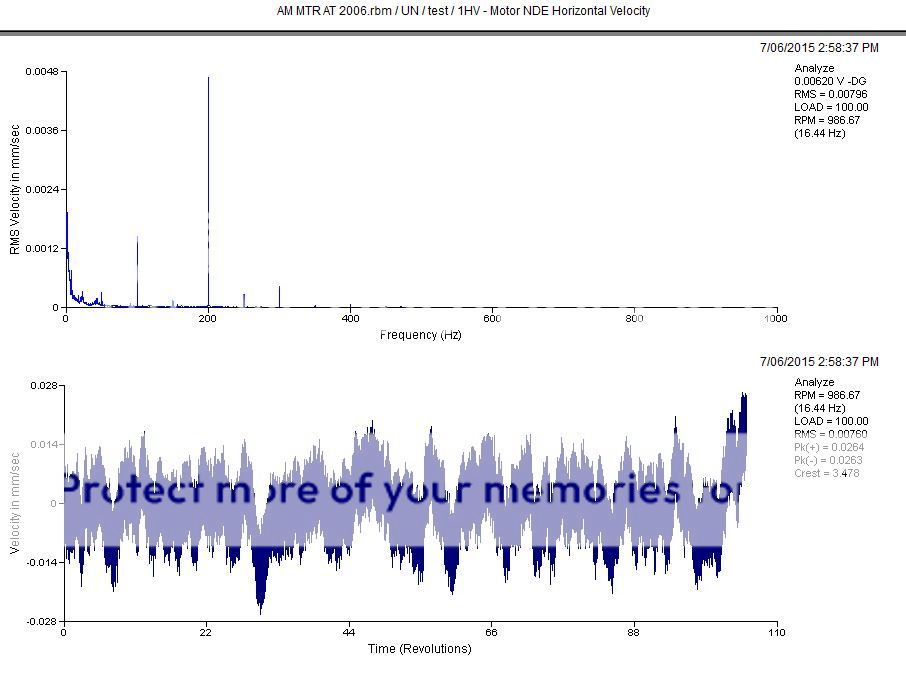
OK, now a 60Hz tone playing at 85 dB

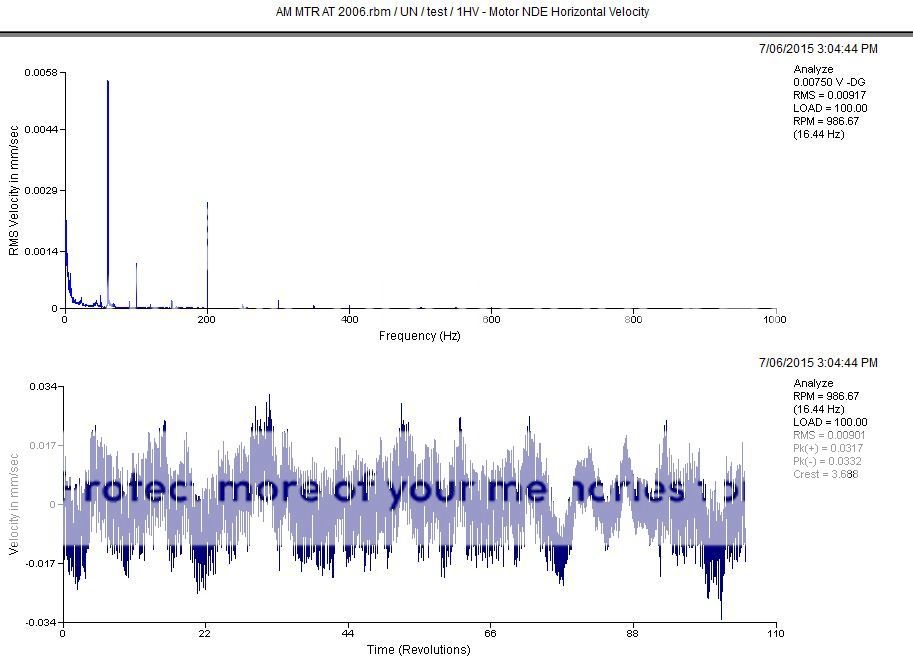
250Hz
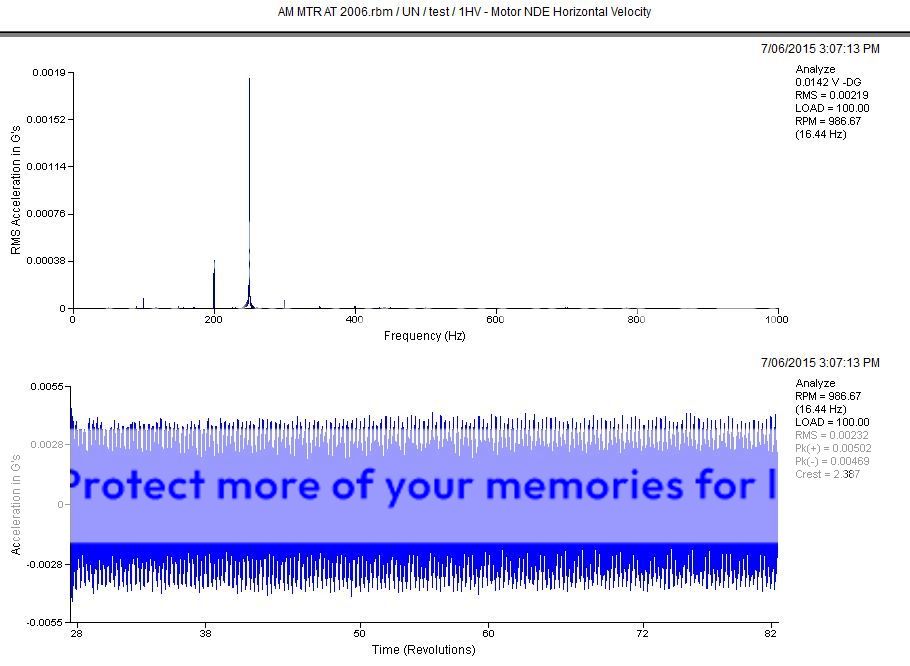
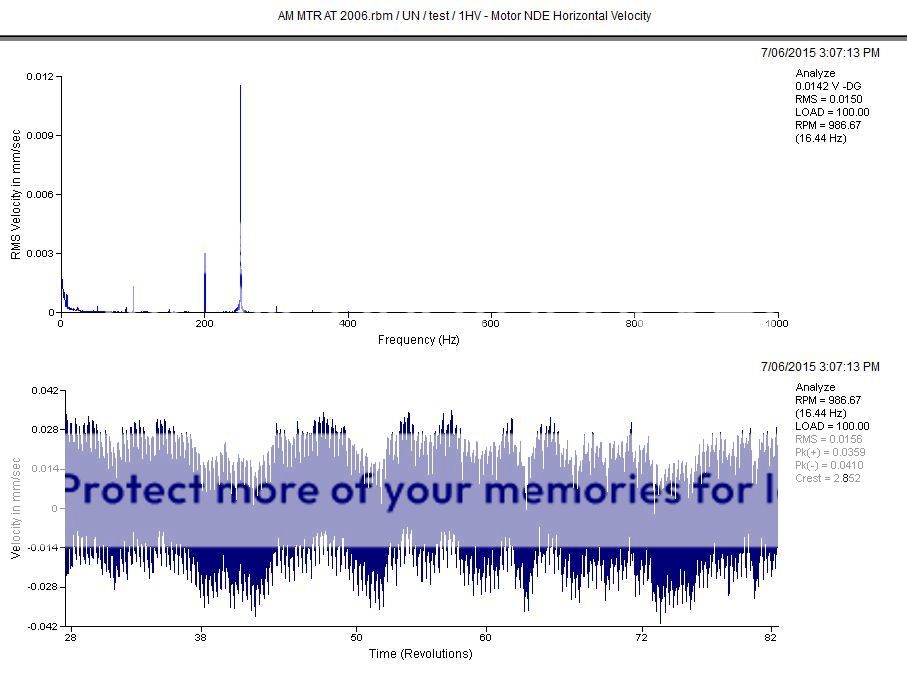
500Hz
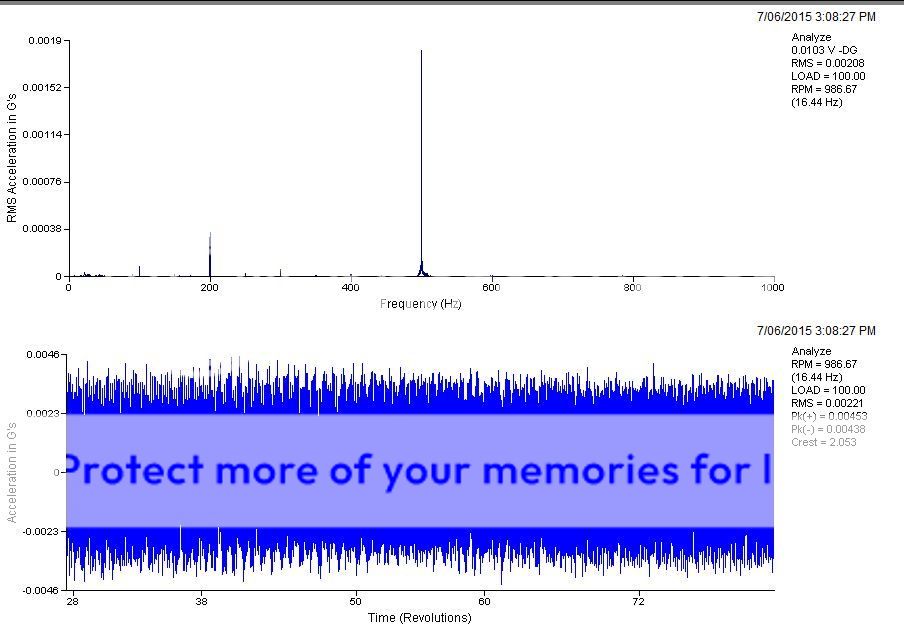
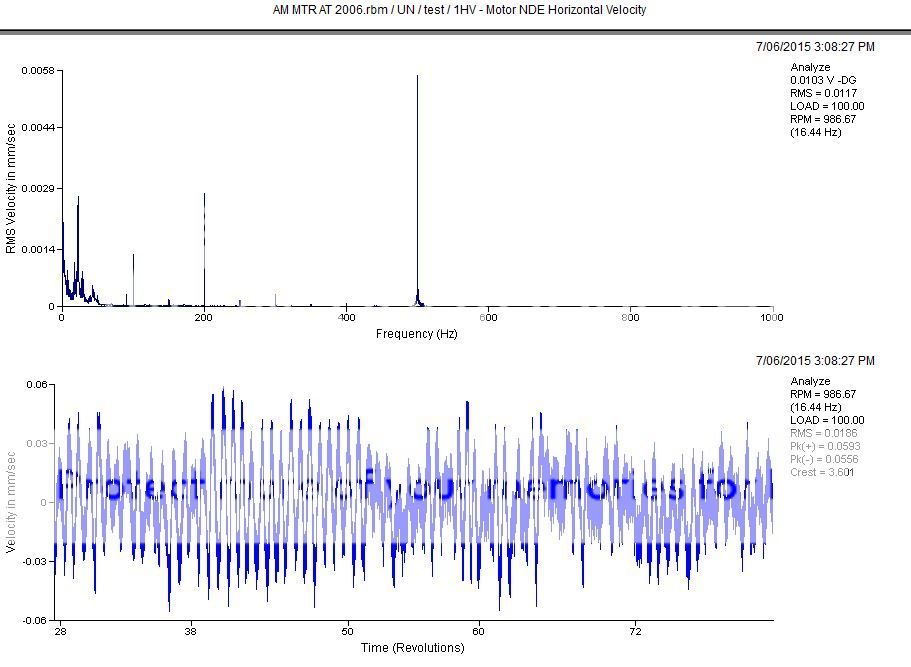
Daft Punk - ignore the FFT, just look at the waveform. The transient nature of the music will not be truly captured by the FFT
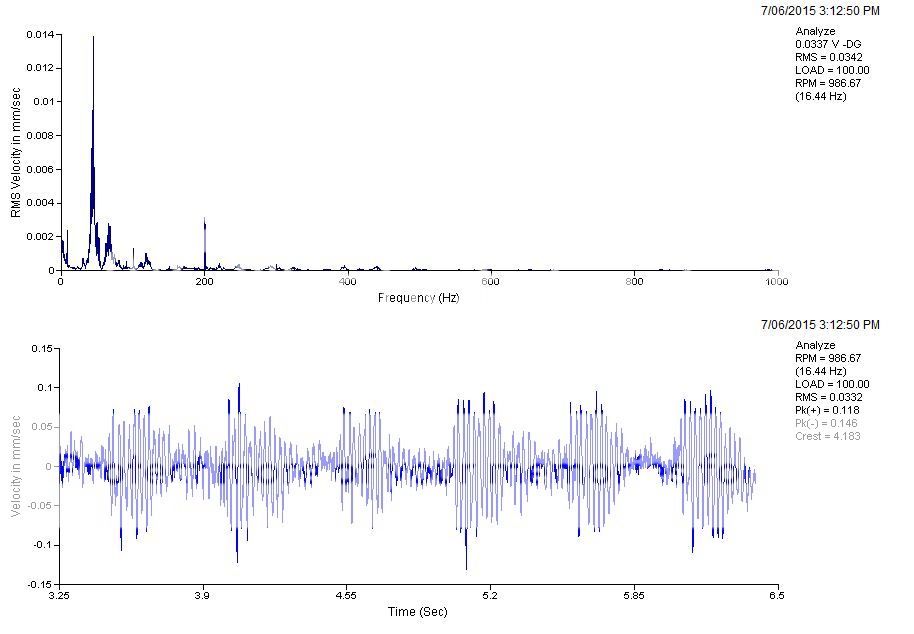
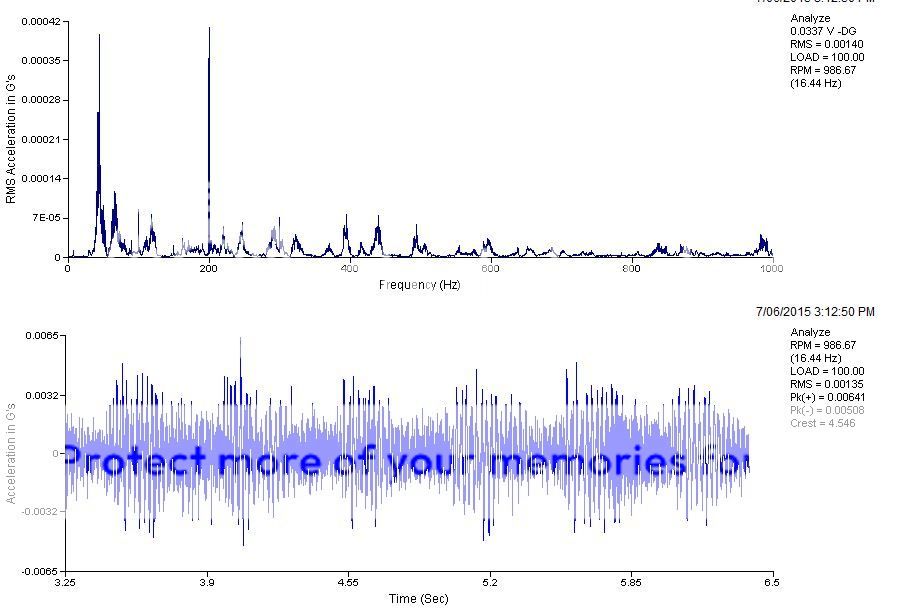
OK, so whats the conclusion? Just look at the numbers. The induced vibration is spectacularly low. Note this is on the amps top cover which is essentially a thin sheet easy to excite. The vibration on the internal components may be even lower.
So anything solid state just dont worry about it. Valves are a little bit different, they are more microphonic. Steven give one of the valves a flick. Do you hear it ring? Well its possible that if you play notes loud enough at that frequency it may resonate, but for general music again I wouldnt say it would have much effect. You going to have try real hard to get it to be a problem. All of this and its effects can be measured if you want to know for sure and just how much. Oh and btw this will have no effect on the room resonances.
Now, I suppose some are saying, well this doesnt tell me if this tiny vibration is actually affecting the output of the amplifier. The next test is to bring home a Bruel & Kjaer measurement system and measure the noise floor of the amplifier with and without music / tones playing from a separate amp and speakers playing in the same room.
I placed an accelerometer on the amps top (Onkyo NR5010 in the theatre room speakers are Usher BE718 with paradigm sub12). The amp is sitting on 20mm mdf shelf with a reinforcing bit of ali angle cos the amp weighs a tonne. Nothing sophisticated in any way. Concrete floor, brick walls.
The first problem here is that if you are not familiar vibration or its terms the plots could be a bit meaningless. So what I did first was take two measurements that put put some context into this for people. 1st was tapping the amp top gently, second is dropping a tennis ball on it multiple times from a height of 10 cm. Both minimal vibration inputs. All plots are provided in velocity and acceleration.




Next plot is the amp off and silent room. If you are wondering what the low frequency ski ramp is, it's a bit of accelerometer noise plus the inherent integration errors from converting to velocity from acceleration.


Next is amp on. Wow, you can see the harmonics of the mains transformer buzzing (its not electrical pick up).


OK, now a 60Hz tone playing at 85 dB


250Hz


500Hz


Daft Punk - ignore the FFT, just look at the waveform. The transient nature of the music will not be truly captured by the FFT


OK, so whats the conclusion? Just look at the numbers. The induced vibration is spectacularly low. Note this is on the amps top cover which is essentially a thin sheet easy to excite. The vibration on the internal components may be even lower.
So anything solid state just dont worry about it. Valves are a little bit different, they are more microphonic. Steven give one of the valves a flick. Do you hear it ring? Well its possible that if you play notes loud enough at that frequency it may resonate, but for general music again I wouldnt say it would have much effect. You going to have try real hard to get it to be a problem. All of this and its effects can be measured if you want to know for sure and just how much. Oh and btw this will have no effect on the room resonances.
Now, I suppose some are saying, well this doesnt tell me if this tiny vibration is actually affecting the output of the amplifier. The next test is to bring home a Bruel & Kjaer measurement system and measure the noise floor of the amplifier with and without music / tones playing from a separate amp and speakers playing in the same room.
BE718,
Thanks for conducting your vibration analysis and presenting the results here.
Your use of a shaker with accelerometers to measure the transfer function would be of interest (although exactly what to measure could be an interesting discussion as I was really thinking about the amplifier support system as I am interested in this and have no kit to measure with).
As others have stated, please could you put your measurement posts in a separate thread as they are far too good to be lost in this thread.
Thanks,
Ian
No worries......... omg I have been over here too long to saying things like that...
OK, can you clarify what your amplifier "support system" is?
There are going to be two major routes for vibration into an amplifier, directly through the surface/stand it is sat on and acoustically induced.
A stand (or the amp itself) will have also its own natural frequencies it resonates at. If excited at those frequencies they will, in simple terms, get amplified. You can bump test to identify those frequencies. The structure can then be modified if necessary to move those frequencies and or reduce their amplitude.
The question is what sort of vibration input is appropriate - I'm a little unconvinced about using a shaker because it's just not representative of the real world vibration going into the system.
different floors will also respond/conduct vibration differently (concrete/wood).
However All this can be measured and amp outputs measured to see what gets through at what level.
Robert
Tapehead
Excellent work and I would agree with your conclusions.
I did some testing along similar lines with essentially the same result, using SS line stage, SS MC phono, and then valve phono.
I can't post here as there are needledrops but: http://www.audio-forums.com/threads/microphony-considerations-test.108455/
I did some testing along similar lines with essentially the same result, using SS line stage, SS MC phono, and then valve phono.
I can't post here as there are needledrops but: http://www.audio-forums.com/threads/microphony-considerations-test.108455/
No worries......... omg I have been over here too long to saying things like that...
OK, can you clarify what your amplifier "support system" is?
There are going to be two major routes for vibration into an amplifier, directly through the surface/stand it is sat on and acoustically induced.
A stand (or the amp itself) will have also its own natural frequencies it resonates at. If excited at those frequencies they will, in simple terms, get amplified. You can bump test to identify those frequencies. The structure can then be modified if necessary to move those frequencies and or reduce their amplitude.
The question is what sort of vibration input is appropriate - I'm a little unconvinced about using a shaker because it's just not representative of the real world vibration going into the system.
different floors will also respond/conduct vibration differently (concrete/wood).
However All this can be measured and amp outputs measured to see what gets through at what level.
Like a few others here I use a set of Mana soundstages under an amp rack.
Basically the soundstage comprises a fibre board that sits on spikes that are held in an angle iron frame. The angle iron frame has spikes pointing downwards to go into another fibre board or into the floor. Essentially the system is stackable.
The amp rack is made out of angle iron and has glass sheets for the equipment to sit on. At the bottom of the rack there are spikes which point downwards to go into the floor or the fibre board on top of a soundstage. The space for equipment to be housed has glass sheets which sit on upward facing spikes.
With their being 4 spikes the system is over constrained so there is a set-up procedure to level the glass sheets, the amp rack and the fibre boards to ensure all 4 points contact with the same pressure.
What would be interesting to know is the transfer function of this mechanical system.
You could well be right in that a shaker may not be the best way to do this, especially as the ground is part of the mechanical system through the energy sinking process. But I am struggling to see how to put the energy into the stand at the required energy level, across the frequency range required.
Robert
Tapehead
You could well be right in that a shaker may not be the best way to do this, especially as the ground is part of the mechanical system through the energy sinking process. But I am struggling to see how to put the energy into the stand at the required energy level, across the frequency range required.
What about one of those bluetooth 'speakers which use a resonant coupling to produce the sound?
They make quite good if variable portable 'speakers!
http://www.ebuyer.com/582698-adin-d...=51630194939&gclid=COfLnKTq_cUCFUjnwgodxnQALA
Thanks Robert, interesting stuff. BTW the reason I used tones instead of pink noise on this test was so that it would be easy to identify them in the noise floor.
Yes that's sensible. Later on in the test I used music signal.
What about one of those bluetooth 'speakers which use a resonant coupling to produce the sound?
They make quite good if variable portable 'speakers!
http://www.ebuyer.com/582698-adin-d...=51630194939&gclid=COfLnKTq_cUCFUjnwgodxnQALA.
That would definitely be worth trying.
The addition of 2 accelerometers and logging equipment could allow us to measure some interesting results.
BE 718, is there any cheap(?) logging equipment available for purchase?
I would like to echo others in thanking BE718 for his efforts.
Why I think the use of a shaker plate might be useful is to demonstrate an effect in extreme circumstances. If no effect can be detected then the theory (of the damage microphony can do to a signal) is flawed.
If microphony has no effect on what we hear, how then do isolation products work, if indeed they do. By isolation products I mean anything from cones, sorbothane, equipment feet, racks etc..
Why I think the use of a shaker plate might be useful is to demonstrate an effect in extreme circumstances. If no effect can be detected then the theory (of the damage microphony can do to a signal) is flawed.
If microphony has no effect on what we hear, how then do isolation products work, if indeed they do. By isolation products I mean anything from cones, sorbothane, equipment feet, racks etc..
Tony L
Administrator
Surely one only needs to recreate real world events, e.g. whether a typical audio sound pressure level in-room is likely/capable of having any impact on the equipment's output? Banging, tapping etc is just not what is happening in this scenario. What we have is a constant yet varying full-range sound pressure, the sound of the music in-room. As such I'd have thought a loudspeaker speaker playing something should be the energy force - if I was doing it here I'd use my Moog into my bass amp and see if that could upset the output of a preamp/CD player or whatever. To my mind whether the equipment casework resonates is irrelevant, what matters is if there is any measurable change to the output, e.g. record the analogue outs playing a track in total silence, then do the same in a room with a series of say 95db LF pulses, intermittent pink noise etc, then do a null-text on the two files and see if there is a change. Try the test with a few different things less/more likely to be microphonic, e.g. a modern surface mount technology DAC and a old valve amp.
As an example I know I can hear the effect of tapping certain tubes in high-gain positions through the speakers, but I tend not to tap them whilst listening to music and I very much doubt the SPL I put into the room us going to worry them much as the energy actually reaching them will be miniscule fraction that of physically tapping the tube with my finger! Even so I'd be interested to see this measured and even more to see if any of the usually reassuringly expensive support "solutions" available had even the slightest effect (baring in mind we are dealing with airborne energy here).
As an example I know I can hear the effect of tapping certain tubes in high-gain positions through the speakers, but I tend not to tap them whilst listening to music and I very much doubt the SPL I put into the room us going to worry them much as the energy actually reaching them will be miniscule fraction that of physically tapping the tube with my finger! Even so I'd be interested to see this measured and even more to see if any of the usually reassuringly expensive support "solutions" available had even the slightest effect (baring in mind we are dealing with airborne energy here).
Robert
Tapehead
Surely one only needs to recreate real world events, e.g. whether a typical audio sound pressure level in-room is likely/capable of having any impact on the equipment's output?
I'd say you need more extreme conditions, because simply measuring the effects in normal use at normal listening levels will invite the myriad cares of 'yeah but if you did this' the results would be different.
You need to show that typical usage conditions fall below the threshold of results obtained from a more extreme test. For that reason I used a pre amp with lots of gain, (and lots of components in the signal path), recorded into a digital recorder using maximum gain, and then applied further gain in software. All tied to a music signal at a painfully high SPL. If under these conditions there is no output, we can safely conclude that no output would also be the result in all normal domestic conditions.
The signal source needs to be wide-band IMO, both noise and music.
OK, the measurements only took about 15 minutes, I suspect writing this post may take longer.
I placed an accelerometer on the amps top (Onkyo NR5010 in the theatre room speakers are Usher BE718 with paradigm sub12). The amp is sitting on 20mm mdf shelf with a reinforcing bit of ali angle cos the amp weighs a tonne. Nothing sophisticated in any way. Concrete floor, brick walls.
The first problem here is that if you are not familiar vibration or its terms the plots could be a bit meaningless. So what I did first was take two measurements that put put some context into this for people. 1st was tapping the amp top gently, second is dropping a tennis ball on it multiple times from a height of 10 cm. Both minimal vibration inputs. All plots are provided in velocity and acceleration.




Next plot is the amp off and silent room. If you are wondering what the low frequency ski ramp is, it's a bit of accelerometer noise plus the inherent integration errors from converting to velocity from acceleration.


Next is amp on. Wow, you can see the harmonics of the mains transformer buzzing (its not electrical pick up).


OK, now a 60Hz tone playing at 85 dB


250Hz


500Hz


Daft Punk - ignore the FFT, just look at the waveform. The transient nature of the music will not be truly captured by the FFT


OK, so whats the conclusion? Just look at the numbers. The induced vibration is spectacularly low. Note this is on the amps top cover which is essentially a thin sheet easy to excite. The vibration on the internal components may be even lower.
So anything solid state just dont worry about it. Valves are a little bit different, they are more microphonic. Steven give one of the valves a flick. Do you hear it ring? Well its possible that if you play notes loud enough at that frequency it may resonate, but for general music again I wouldnt say it would have much effect. You going to have try real hard to get it to be a problem. All of this and its effects can be measured if you want to know for sure and just how much. Oh and btw this will have no effect on the room resonances.
Now, I suppose some are saying, well this doesnt tell me if this tiny vibration is actually affecting the output of the amplifier. The next test is to bring home a Bruel & Kjaer measurement system and measure the noise floor of the amplifier with and without music / tones playing from a separate amp and speakers playing in the same room.
+1.
Tony L
Administrator
I'd say you need more extreme conditions, because simply measuring the effects in normal use at normal listening levels will invite the myriad cares of 'yeah but if you did this' the results would be different.
You need to show that typical usage conditions fall below the threshold of results obtained from a more extreme test. For that reason I used a pre amp with lots of gain, (and lots of components in the signal path), recorded into a digital recorder using maximum gain, and then applied further gain in software. All tied to a music signal at a painfully high SPL. If under these conditions there is no output, we can safely conclude that no output would also be the result in all normal domestic conditions.
The signal source needs to be wide-band IMO, both noise and music.
One thing I'd be interested in proving/disproving is the notion of a "feedback loop" as mentioned in the other thread, i.e. try to establish if the energising frequency can be found at all on the sound output (assuming of course any effect was present at all). As an example if one were to place say a tube preamp on an upturned bass amp or sub-woofer and run a loud 50Hz sin wave through it would you actually measure any 50Hz signal on the preamp's output? A feedback loop occurs when a microphone is able to hear it's own output which is then reamplified, i.e. the input must hear and respond to the output frequency it is generating. I very much suspect that equipment "microphony" doesn't work in this manner, especially not at anything that could be classed as room-node frequencies (again as suggested in the other thread) - if you tap a tube you'll get a high-pitch 'tink' or 'ting' sound, not a bass frequency, so I don't see how this could ever howl-round/feedback.
It would be interesting to see if induced vibration had a more dramatic effect on stylus tracking and cart distortion whilst playing an LP.
Unquestionably an issue, this is an area where microphony is a given. Record decks do all suffer from feedback to some greater or lesser degree dependant on design and installation. In fact I suspect most of the differences between decks that rotate at the right speed are down to their stability and isolation. Many ways to skin that particular cat.
PS LOL at CG's '+1' post!
Could vibration affect the interconnects - not the cables, but the pin/socket interface? Naim seem to think it does, but has anyone looked at this?
I doubt whether acoustic vibration has any significant effect on anything at all, but there's structure-borne environmental vibration, and intrinsic vibration generated inside the various boxes. The most extreme form of this is the stylus in the groove.
I doubt whether acoustic vibration has any significant effect on anything at all, but there's structure-borne environmental vibration, and intrinsic vibration generated inside the various boxes. The most extreme form of this is the stylus in the groove.
Purité Audio
Trade: Purite Audio
Only if they vibrate out of the sockets, structural borne will certainly affect turntables, very accurate balances can be enclosed to eliminate air borne vibration.
Keith
Keith
YNWOAN
100% Analogue
Many years ago a friend had a Counterpoint tube pre and if you turned the volume up a bit and spoke loudly at it you could hear your words through the speakers (it had a phono stage in those days). A few years ago Andrew held a bake-off and Pete brought round a self built valve phono stage. It proved to be so microphonic that when recordings made with it were played back you could clearly hear people talking it the room - it was so microphonic it literally behaved like a microphone!
I've seen a system with a non-suspended turntable as source go into full uncontrolled feedback (the system wasn't playing loudly) due to the flimsy nature of its support (essentially a large leaf spring). Thankfully it was turned off before the speakers self destructed.
I've seen a system with a non-suspended turntable as source go into full uncontrolled feedback (the system wasn't playing loudly) due to the flimsy nature of its support (essentially a large leaf spring). Thankfully it was turned off before the speakers self destructed.
- Status
- Not open for further replies.

